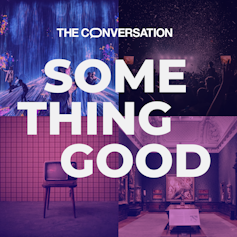The new documentary Grand Theft Hamlet marks a groundbreaking moment in the world of digital performance. It tells the story of an innovative theatrical production of Hamlet, staged within the popular video game Grand Theft Auto (GTA), which began as an accidental, creative response to the lockdown period. With theatres closed, the creators had decided that the show must go on, adopting a unique performance space to put on Shakespeare’s Hamlet.
The documentary is about two actors’ desire to find fulfilment in their art and is testament to the boundless possibilities of artistic innovation. The documentary, which features possibly the first ever theatrical performance of Shakespeare within a video game, tells the story of how Hamlet in Grand Theft Auto was pulled off. A funny and inspiring film, it has garnered awards and critical acclaim for its originality and execution.
First released in 1997, GTA has been a focal point of debates about gaming for nearly three decades. It is often charged with encouraging anti-social behaviour, as the core plot line of the game involves players carrying out missions to rise in the criminal underworld. In GTA’s latest online open world edition, it has also become more of a social game, with players meeting up and enjoying a shared experience.
This new social open world allowed actors Sam Crane and Mark Oosterveen to stage Hamlet with actors appearing as avatars in the beautiful graphic backdrop of GTA’s fictional Hollywood environment, known in the game as Vinewood. These visuals create a cinematic experience that is both melancholic, contemplative and hilarious. The ensuing documentary of the production tells a story of artistic frustration during the COVID lockdown, while also celebrating the liberation and excitement of discovering new creative frontiers.

Looking for something good? Cut through the noise with a carefully curated selection of the latest releases, live events and exhibitions, straight to your inbox every fortnight, on Fridays. Sign up here.
The production also arrived at a pivotal moment in the history of the creative industries, which are undergoing significant transformations and threats. Changes in audience behaviour and expectations, including a willingness to see theatre in-person but also online, have reshaped how we engage with art. Grand Theft Hamlet exemplifies this shift, demonstrating how traditional art forms can evolve and find new life in digital spaces.
Another major event during lockdown that’s worth mentioning in this context is the Royal Shakespeare Company’s Dream. It worked with London-based art collective Marshmallow Laser Feast and the city’s Philharmonia Orchestra to design a virtual live performance of Shakespeare’s A Midsummer Night’s Dream using live motion capture.
While such innovative prospects are exciting, the embrace of digital spaces is not without its problems. Writers, actors, producers and publishers are all working through the implications of AI-generated worlds and works, from AI learning to write plays to recent concerns expressed by Cate Blanchett about how voice cloning could erode the role of the actor.
Yet, Grand Theft Hamlet is a reminder that technology can often propel artists into new creative forms, rather than always leading to a collapse in creativity. The production demonstrates how there are still more ways in which art can evolve that are surprising, rich and valuable.
Many of the actors involved in the eventual production were not professional performers, but gamers who stumbled upon the project during its preparation while strolling through the fantasy world. Despite their lack of formal training, they delivered phenomenal performances, shaping the production and the value it generated for the people involved.
Watching Grand Theft Hamlet is an educational experience for those unfamiliar with GTA or gaming. It showcases what a performance of Shakespeare could become when the budget for staging and scenography is already written into the landscape of an open world digital game.
Sam Crane and Mark Oosterveen and co-director Penny Grylls, ingeniously took the artistic work inherent in GTA’s game design and brought a directorial vision, which created a distinct cinematic experience. Not restricted to a single stage, their Hamlet takes place in remarkable settings that most directors could only dream of, such as the top of a blimp as it flies through the sky.
For skeptics of the artistic or social value of gaming, Grand Theft Hamlet provides compelling evidence of its potential to still be reimagined. The production transforms the symbolism, meanings and values typically ascribed to Grand Theft Auto, and remakes it into a deeply introspective and sensitive depiction of the human condition. This staging of the tragedy addresses the struggle, sadness and joy of life.
The classic violence of GTA takes on completely new meaning in Grand Theft Hamlet. In fact, the violence often becomes comedic and slapstick. For instance, early in the development of the production, Crane and Oosterveen have to ask audience members to please “refrain from killing each other … and don’t kill the actors either”. After all, it’s hard to get through a scene if gamers in the crowd are blowing each other up. This sort of exchange really sets a tone for how the game’s violence is used in the documentary.
Whether you are a fan of gaming or Shakespeare, Grand Theft Hamlet is an inspiring example of how tradition and technology can come together to create something truly extraordinary. It present an optimistic view of the future of creativity, highlighting the potential for new formats of creative practice to find common ground with traditional art forms.
![]()
Andy Miah does not work for, consult, own shares in or receive funding from any company or organisation that would benefit from this article, and has disclosed no relevant affiliations beyond their academic appointment.



